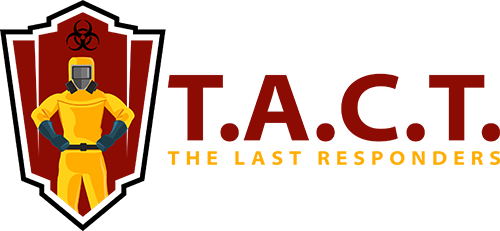Essential Guide to Test for Mold

Essential Guide to Testing for Mold: Protect Your Home and Health
Introduction to Mold
Mold is a type of fungus that can grow indoors, causing health problems and damage to building materials.
There are many types of mold, including toxic mold, and different mold species can vary in appearance, health risks, and how they respond to cleaning or detection techniques, with some producing mycotoxins that pose serious health risks.
Mold growth requires excess moisture and an organic surface to feed on, specifically organic matter commonly found in homes such as walls, ceilings, and damp areas.
Mold exposure can lead to health problems, including triggering asthma attacks and worsening respiratory conditions, especially in sensitive individuals.
Professional mold remediation companies can help identify and remove mold, but it’s essential to understand the basics of mold testing and prevention.
Understanding Mold Growth
Mold spores are everywhere, but they only grow into mold colonies when they find a damp, organic surface to feed on and the conditions are right for mold growing.
Visible mold growth is often a sign of a larger mold problem, and hidden mold can be more challenging to detect. Identifying mold typically involves looking for discoloration, dark spots, or unusual growth patterns on walls, ceilings, or other surfaces where moisture is present.
Once spores settle and begin to grow, they can quickly develop into colonies. If conditions remain favorable, these spores can lead to the formation of new mold colonies throughout the affected area.
Mold growth can be prevented by controlling humidity levels, fixing leaks, and improving ventilation.
Regular cleaning and maintenance can also help prevent mold growth and reduce the need for mold testing.
Hidden Mold
Hidden mold can grow behind walls, in crawl spaces, and under flooring, making it difficult to detect.
Mold odors and musty smells, especially a persistent musty odor, can be a key indicator of hidden mold, and professional mold testing may be necessary to identify the source.
DIY mold test kits can be used to detect mold spores in the air, but they may not be accurate for hidden mold. An air test can help identify mold spores present in indoor air, especially in areas like walls and HVAC ductwork, to ensure indoor air quality.
Professional mold remediation companies use specialized equipment and techniques, including visual inspection as a primary method for detecting hidden mold. In addition, professionals conduct sampling for mold using various sampling methods to ensure accurate detection and comprehensive assessment.
Identifying a Mold Problem
Visible mold growth, including dark spots and discoloration, are common signs of a mold problem. Be sure to check grout lines in bathrooms and kitchens, as visible growth often appears there and can indicate moisture issues.
Health problems, such as respiratory issues and allergic reactions, can also be a sign of mold exposure. People may find mold through visual inspection or by noticing these symptoms.
Mold testing can help identify the type and extent of mold growth, and professional mold remediation companies can provide guidance on removal and prevention.
It’s essential to address mold problems promptly to prevent further growth and health risks, as unresolved mold complaints can lead to additional property and health issues.
Health Concerns
Mold exposure can cause a range of health problems, from mild allergic reactions to severe respiratory issues, and how much mold exposure is needed to cause symptoms can vary from person to person.
Certain molds, such as toxic mold, can produce mycotoxins that can cause serious health effects, and mold exposure can cause a full range of health effects, from mild to severe.
People with weakened immune systems, asthma, or other respiratory problems are more susceptible to mold-related health issues.
Professional mold remediation companies can help identify and remove mold, reducing the risk of health problems and emphasizing the importance of addressing mold issues promptly to protect health.
Testing for Mold
Testing for mold is an essential step in identifying and resolving mold problems in your home. There are several ways to perform mold testing, including air sampling, surface sampling, and bulk sampling. Professional mold remediation companies use advanced tools and follow strict mold sampling protocols to ensure accurate results. These experts can pinpoint the presence and extent of mold growth, even in areas that are not easily visible. While DIY mold test kits are available and can be useful for initial checks, they often lack the precision and reliability of professional testing. If you suspect mold in your home, it’s best to have a professional mold remediation company perform mold testing. Their expertise ensures that mold problems are properly identified and that you receive clear recommendations for mold remediation and prevention.
Air Sampling
Air sampling is a widely used method for mold testing that helps detect mold spores circulating in your indoor air. This technique involves using specialized equipment to collect air samples from different rooms or areas, especially where mold growth is suspected or where humidity levels are high. The collected samples are then analyzed in a laboratory to determine the types and concentrations of mold spores present. Air sampling is particularly effective for uncovering hidden mold that may not be visible but is still affecting your indoor environment. Professional mold testing companies often include air sampling as part of their comprehensive assessment to identify mold problems and recommend targeted solutions for improving air quality and addressing mold growth.
Bulk Sampling
Bulk sampling is a mold testing method that involves removing small pieces of building materials—such as drywall, carpet, or insulation—from areas where mold growth is suspected. These samples are then analyzed to determine the type of mold present and the extent of the contamination. Although bulk sampling is more invasive than air sampling, it provides valuable information about the severity and spread of mold within specific materials. Professional mold remediation companies typically perform bulk sampling to guide the mold remediation process, ensuring that all affected materials are properly treated or replaced. This method helps confirm the presence of mold and supports the development of an effective remediation plan.
Understanding Test Results
Interpreting mold test results is key to addressing mold problems effectively. Mold testing reports typically detail the types and quantities of mold spores found, the severity of mold growth, and the specific areas affected. Professional mold testing companies provide clear explanations of these results, along with recommendations for mold remediation and prevention. When reviewing your mold test results, pay attention to the type of mold identified, the concentration of spores, and any notes about excess moisture or other factors that may be contributing to mold growth. Understanding these details will help you make informed decisions about how to resolve the mold problem and prevent it from returning.
Finding Mold
Mold can grow in a variety of locations, including walls, ceilings, floors, and crawl spaces; it is important to inspect each moldy area carefully.
Visible mold growth, mold odors, and musty smells can all be signs of a mold problem.
Professional mold remediation companies use specialized equipment and techniques to detect and remove mold, and they also check other locations in the home for hidden mold.
Regular inspections and maintenance can help prevent mold growth and reduce the need for mold testing.
Indoor Air Quality
Indoor air quality can be affected by mold growth, and running the air conditioner when mold is present in the system can circulate mold spores throughout the space; professional mold remediation companies can help improve air quality.
Mold testing can help identify the type and extent of mold growth, but negative findings do not always guarantee the absence of mold or air quality issues, and results should be interpreted with caution to provide guidance on removal and prevention.
Regular inspections and maintenance can help prevent mold growth and reduce the need for mold testing.
Improving ventilation and controlling humidity levels can also help improve indoor air quality and prevent mold growth.
Mold Remediation
Mold remediation involves removing and cleaning up mold growth, and preventing future growth, with an emphasis on using proper methods to clean mold safely and effectively.
Professional mold remediation companies use specialized equipment and techniques to remove and clean up mold, often utilizing diluted bleach as a cleaning agent for mold removal.
DIY mold remediation can be effective for small areas of mold growth, but it’s essential to follow proper safety precautions and protocols, including never mixing bleach with other chemicals when cleaning mold to avoid hazardous fumes.
Preventing future mold growth requires addressing the underlying moisture problems and improving ventilation and humidity control.
DIY Mold Remediation
DIY mold remediation can be a practical option for small, contained areas of mold growth, but it’s important to approach the task with caution. Always use appropriate safety precautions, such as wearing gloves, goggles, and a mask, to protect yourself from mold exposure and health risks. Choose household cleaners that are specifically designed for mold removal, and ensure the affected area is well-ventilated during the cleaning process. Thoroughly clean and dry the area to prevent mold from returning. However, if the mold growth is extensive, or if you are unsure about the best way to proceed, it’s wise to consult a professional mold remediation company. Professionals have the training and equipment needed to handle larger mold problems safely and effectively, reducing the risk of further damage or health issues.
Hiring a Professional
Hiring a professional mold remediation company can help ensure that mold is properly removed and prevented, as professionals are responsible for designing mold sampling protocols to ensure accurate results.
Professional mold remediation companies use specialized equipment and techniques to remove and clean up mold.
It’s essential to research and interview potential companies to find a qualified and experienced professional; you should also check with your insurance company regarding mold coverage and liability.
Checking for certifications, licenses, and insurance can also help ensure that the company is qualified and reputable, and professionals may recommend mold testing only in specific situations.
When choosing between a qualified and reputable professional and using a mold test kit for initial detection, keep in mind that professionals offer more comprehensive assessment and remediation.
Additional Resources
Additional resources, such as mold testing kits and remediation guides, can be found online or through professional mold remediation companies.
It’s essential to research and understand the basics of mold testing and remediation before attempting DIY remediation.
Professional mold remediation companies can provide guidance and support throughout the remediation process.
Preventing future mold growth requires ongoing maintenance and attention to indoor air quality and moisture levels.



